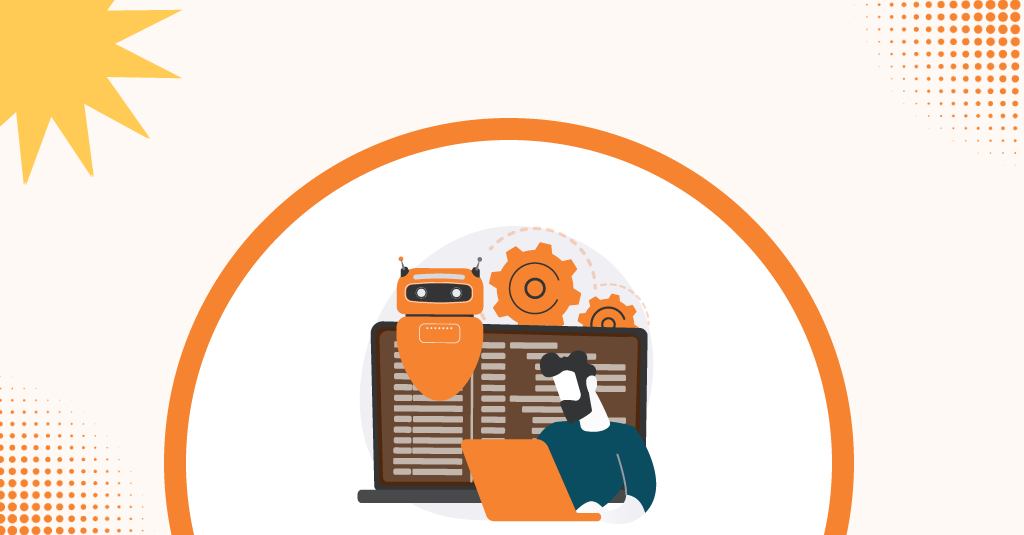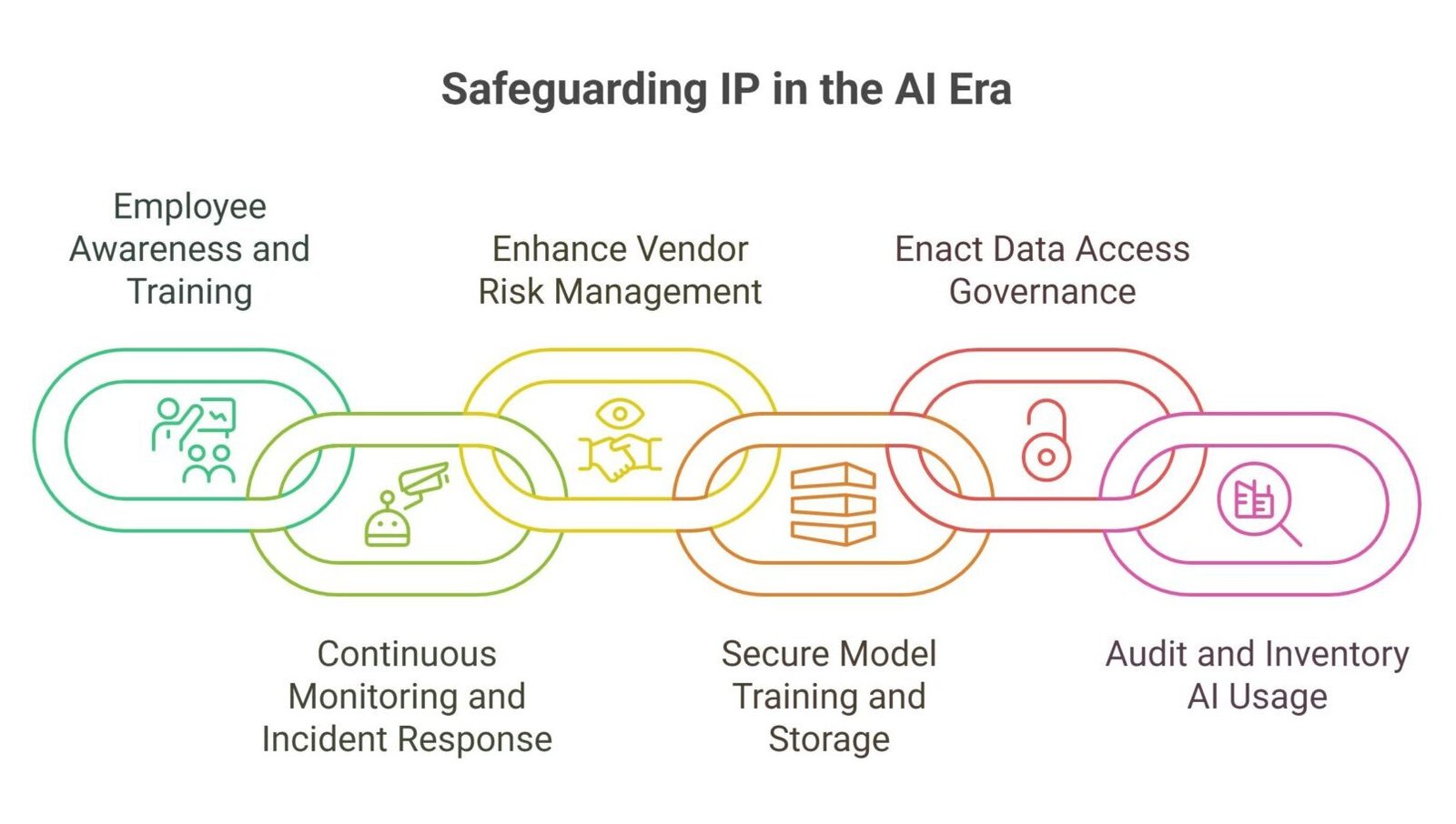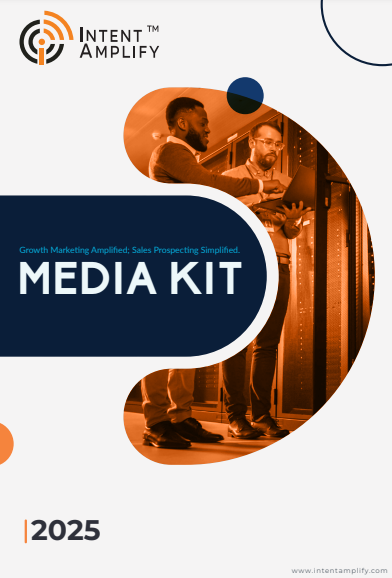
How to Keep Your Intellectual Property Safe from Generative AI Security Threats
- Last updated on: October 2, 2025
Generative AI (Artificial Intelligence) has rapidly progressed from being an experimental application to becoming part of day-to-day business processes. But with its potential comes a rising issue: intellectual property security. This AI is different from traditional technologies in that it significantly depends on large amounts of data, provided by users themselves in many cases. Once sensitive data finds its way into such systems, it has the potential to create exposures that cannot be contained by organizations.
For those businesses that are in high-risk sectors like fintech, SaaS, and cybersec, the consequences are especially dire. Intellectual property is not merely an asset; it is too often the very source of competitive edge. Safeguarding it during the era of AI is imperative.
How Generative AI Creates IP Risks
The threats to generative AI security are not hypothetical. They appear in real-world, day-to-day situations where employees and systems input information to AI models. By inputting proprietary roadmaps, source code, or financial information into publicly accessible tools, such as generative AI models, employees can unwittingly permit such systems to log or reuse the information. The information could come up in subsequent outputs for other users, essentially leaking trade secrets outside.
Shadow use, or so-called “shadow AI,” exacerbates the issue. Overeager workers wanting to try AI circumvent company policies, applying consumer-grade apps without the knowledge that these tools might collect and reuse their inputs. Even when firms buy enterprise-class AI products, vendor contracts are not always transparent regarding data retention policies, model training methods, or confidentiality limits. This vagueness provides leeway for confidential business information to leak out of secure environments.
The security risks are equally daunting. New-wave adversarial attacks, like prompt injection or model inversion, allow attackers to query an AI system and harvest pieces of its training data. If intellectual property happens to be part of that training data, like confidential algorithms, strategic plans, or proprietary datasets, attackers have a direct path to the very information companies want to keep secure.
Consequences of Poor Generative AI Security
The consequences of poor generative AI security spread far beyond unintentional exposure of data. For B2B firms, effects can hit at the core of business value, impacting competitive edge, reputation, and operational effectiveness.
1. Intellectual Property Exclusivity Loss
One of the most immediate risks is that proprietary algorithms, product designs, or customer insights can leak into AI outputs if models are not tightly controlled. What was once a differentiator in the market can quickly become widely known, commoditizing knowledge and eroding hard-earned leadership positions.
2. Legal and Compliance Risks
Leaks of intellectual property usually entail legal penalties, regardless of whether the disclosure was unintentional. Regulators and courts can consider mishandling of confidential information a failure to comply. Sectors that have rigorous data protection standards. They are finance, healthcare, and cybersecurity. Subject fines, lawsuits, and long-term reputation loss. Even the suggestion of weak security can prompt examination from clients and regulators.
3. Degradation of Brand and Customer Trust
It turns one major high-profile case of leaked strategies or private information into a damaging blow to credibility. Buyers increasingly value partners who guard their own intellectual assets as well as customer information. Once trust is lost, sales cycles are prolonged, deals are delayed, and company retention drops.
4. Operational Disruptions
Reactions to AI IP leaks divert teams away from growth plans to harm control. Organizations can be forced to carry out forensic analysis, re-negotiate vendor contracts, and establish emergency measures. These steps inhibit innovation and add operational expenses, particularly for startups and scale-ups, which depend on fast execution in order to be competitive.
5. Strategic Exposure
The most perilous fallout may be the release of nuanced strategic intelligence. Intellectual property is more than patents and products; it includes go-to-market playbooks, price models, and campaign plans. If the enemy gets to see these insights, they get a roadmap to counter your moves. Weak generative AI security, in this scenario, not only leaks information. It betrays your forthcoming competitive playbook.
Best Practices to Safeguard IP in the Era of Generative AI
Intellectual property protection in the era of generative AI needs a conscious, multi-layered strategy. IT security best practices are not enough anymore. B2B companies need to adopt measures that control the technological as well as the human aspects, introducing risk. Here are the essential best practices that businesses need to implement.
1. Audit and Inventory AI Usage
First is to know how AI tools are being adopted throughout the organization. Leaks often happen through unauthorized “shadow AI” adoption, with workers testing generative AI beyond approved systems. Performing an audit of all AI touchpoints, including third-party services, experimentation within the organization, and external APIs, sets visibility. Overlaying the tools against sensitive data access helps organizations identify high-risk areas and put targeted controls in place.
2. Enact Data Access Governance
After AI use is accounted for, companies ought to have rigorous data access controls. Permission-based access so that authorized workers alone can input sensitive data into AI systems. Data classification models. It ultimately determines what is public, internal, or confidential, a reference. That material may be used with AI applications. This strategy reduces the potential for unintentional IP exposure but permits teams to keep working with AI for non-sensitive matters.
3. Secure Model Training and Storage
AI security begins with the model. Organizations must keep proprietary data used for training encrypted, anonymized, and stored in managed environments. Fine-tuning on secure servers, which should be disconnected from external networks unless robust vendor arrangements ensure data protection, is recommended. Ongoing monitoring of model output can also catch unintentional reproduction of sensitive information.
4. Enhance Vendor Risk Management
Most B2B companies outsource to third-party AI suppliers. Care in selecting vendors with open security practices, clear data retention practices, and robust contractual terms is crucial. Agreements should conspicuously exclude the use of proprietary data for model training or retention outside the company’s business operations. Ongoing audits and risk assessments of vendor operations minimize the chances of IP leaks through external partners.
5. Continuous Monitoring and Incident Response
Risks may still occur in spite of preventive measures. The continuous monitoring of AI functions, with on-the-spot alerting of abnormal activities, allows companies to uncover leaks forming before they grow into a large issue. The utilization of AI security, together with the already existing incident response plan, ensures that staff can be quick to action, such as isolating the breach, assessing the harm, and providing remedial measures when a security breach occurs.
6. Employee Awareness and Training
Human errors are still ranked among the main causes of IP exposure. The staff need to be aware of the risks of generative AI and the policy concerning its use. The workout sessions must involve the following: safe AI operating procedures, portrayal of situations in which employees should not interact with the AI, and the negative impact of the careless release of sensitive information. Cultivating a culture that is aware of security guarantees that employees become the first line of defense rather than a source of vulnerability.
Emerging Solutions and Future Trends
As generative AI becomes central to business operations, organizations must adopt forward-looking solutions to safeguard intellectual property. The following emerging approaches offer executives actionable frameworks and technologies to reduce risk while maximizing AI’s benefits.
1. AI Watermarking for Content Traceability
Watermarking embeds invisible markers into AI-generated outputs, enabling organizations to trace content back to its source. This technology serves multiple purposes:
- Source attribution: Identifies which department or user generated specific outputs.
- Misuse detection: Indicates unauthorized use of proprietary AI-created content.
- Vendor accountability: Guarantees third-party vendors treat outputs securely and in the open.
By using watermarking, organizations have control over AI-created assets and identify leaks before they grow into IP exposure.
2. Zero-Trust AI Frameworks
Zero-trust frameworks follow the principle that no user, system, or application is to be automatically trusted. With AI, this applies to:
- Strict access control: Allowing only approved individuals to enter or view sensitive information.
- Model isolation: Isolating proprietary data and model training environments from outside networks.
- Continuous verification: Regularly checking system and user permissions to ensure that there is no unauthorized access.
These measures reduce the potential for unintentional data leaks and turn generative AI into a safe, controlled tool rather than a liability waiting to unravel.
3. Regulatory Alignment and Compliance
AI security standards are being set by international regulations. Compliance with regulations that anticipate the future gives not only a legal shield but also a positive reputation in the market.
- EU AI Act: The European AI Act calls for accountability, transparency, and secure data processing in AI systems.
- The U.S. AI guidelines that are soon to be released: Suggest risk assessments at the enterprise level and put in place data governance requirements.
- Good industry practice: The financial services, healthcare, and cybersecurity sectors require the implementation of additional security measures as they deal with highly sensitive data.
The use of AI performance to counter these models helps organizations to stay clear of penalties, demonstrate their reliability, and qualify as the leaders of responsible AI.
4. Threat Detection through AI
Sophisticated AI solutions can be utilized to scan AI systems themselves, detecting anomalies that might signal IP leakage:
- Anomaly detection: Identifies abnormal model outputs or access patterns.
- Real-time alerts: Informs security teams in real-time when suspected leaks happen.
- Continuous auditing: Offers a constant monitoring of AI interactions and usage logs to maintain compliance.
Organizations secure AI by using AI, thereby creating an active defense system that is faster in responding than manual monitoring alone.
5. Strategic Integration for Long-Term Governance
The integration of watermarking, zero-trust frameworks, regulatory compliance, and AI-powered monitoring heralds a transition towards strategic governance:
- Policy integration: Integrating AI security policy into corporate risk management and IP protection strategies.
- Cross-functional planning: Engaging IT, legal, compliance, and business organizations in AI security planning.
- Ongoing improvement: Refining processes, training, and tools as AI capabilities and threats change.
Organizations embracing these future-focused practices are better suited to use generative AI securely, safeguard intellectual property, and hold onto a competitive edge.
How B2B Companies Can Act Now
Generative AI security can’t be treated as optional for organizations. There is a need for immediate action to protect intellectual property as well as competitive advantage in the short term.
1. Full audit of all AI tools, both shadow AI and third-party platforms
2. Classification of sensitive data with strict controls on access when working with AI systems
3. Secure model training with proper use of encryption, anonymization, and controlled environments.
4. Contract all AI providers for open data handling practices and contractual safeguards against IP exposure.
5. Implement ongoing monitoring of AI output and activity to identify potential leaks in real time.
6. Create an incident response plan specifically for AI-related IP risk, merging it with current security procedures.
7. Teach employees to use AI safely, focusing on the consequences of unintentional exposure to IP.
8. Coordinate AI activities with varying rules like the EU AI Act and the U.S. AI guidelines that are still under development.
9. Look into cutting-edge security measures such as AI watermarking and zero-trust architectures to provide perpetual IP protection.
10. Make AI security an integral part of your corporate governance structure so that IT, legal, compliance, and business units jointly oversee it.
In this way, B2B businesses in SaaS, fintech, and cybersecurity can harness generative AI to their advantage, keeping the intellectual property that is the core of their business safe.
Conclusion
Generative AI is transforming how B2B organizations innovate, yet with these advantages come intellectual property issues. The hazards are real and significant, ranging from unintentional disclosure through shadow AI to the vulnerability of third-party platforms. Companies that do not have structured controls in place, ongoing monitoring, and employee training can lose not only data but also a competitive edge, legal position, and customer confidence.
At Intent Amplify, we are the power behind B2B leaders in SaaS, fintech, and cybersecurity who want to make good and safe use of AI. We combine thorough industry knowledge with practical, future-oriented strategies to allow enterprises to open the AI resource without putting their intellectual property at risk. Protect your intellectual property, remain at the forefront of the evolving security landscape, and turn generative AI into a growth driver rather than a source of risk.
FAQs
1. What is the largest threat of generative AI to intellectual property?
Generative AI inadvertently replicates proprietary information or reveals confidential data through model outputs, causing competitive, legal, and reputational danger.
2. How do I detect shadow AI use in my company?
Do an inventory of all the AI tools and platforms being used by employees, including unauthorized applications, and trace them against sensitive data access.
3. Are SaaS and fintech firms at greater risk for AI-related IP exposure?
Yes. Firms working with sensitive customer information, proprietary algorithms, or product roadmaps, like SaaS, are more at risk if AI tools are not securely implemented.
4. What should employees do to avoid unintentional IP exposure?
Employees need to refrain from sharing confidential information with public AI tools, use company-approved AI standards, and undergo training on secure AI usage.
5. Which rules should businesses keep in mind while acquiring generative AI systems?
Businesses must keep in mind changing frameworks such as the EU AI Act, new U.S. AI guidelines, and sector-specific compliance needs for finance, healthcare, and cybersecurity.




